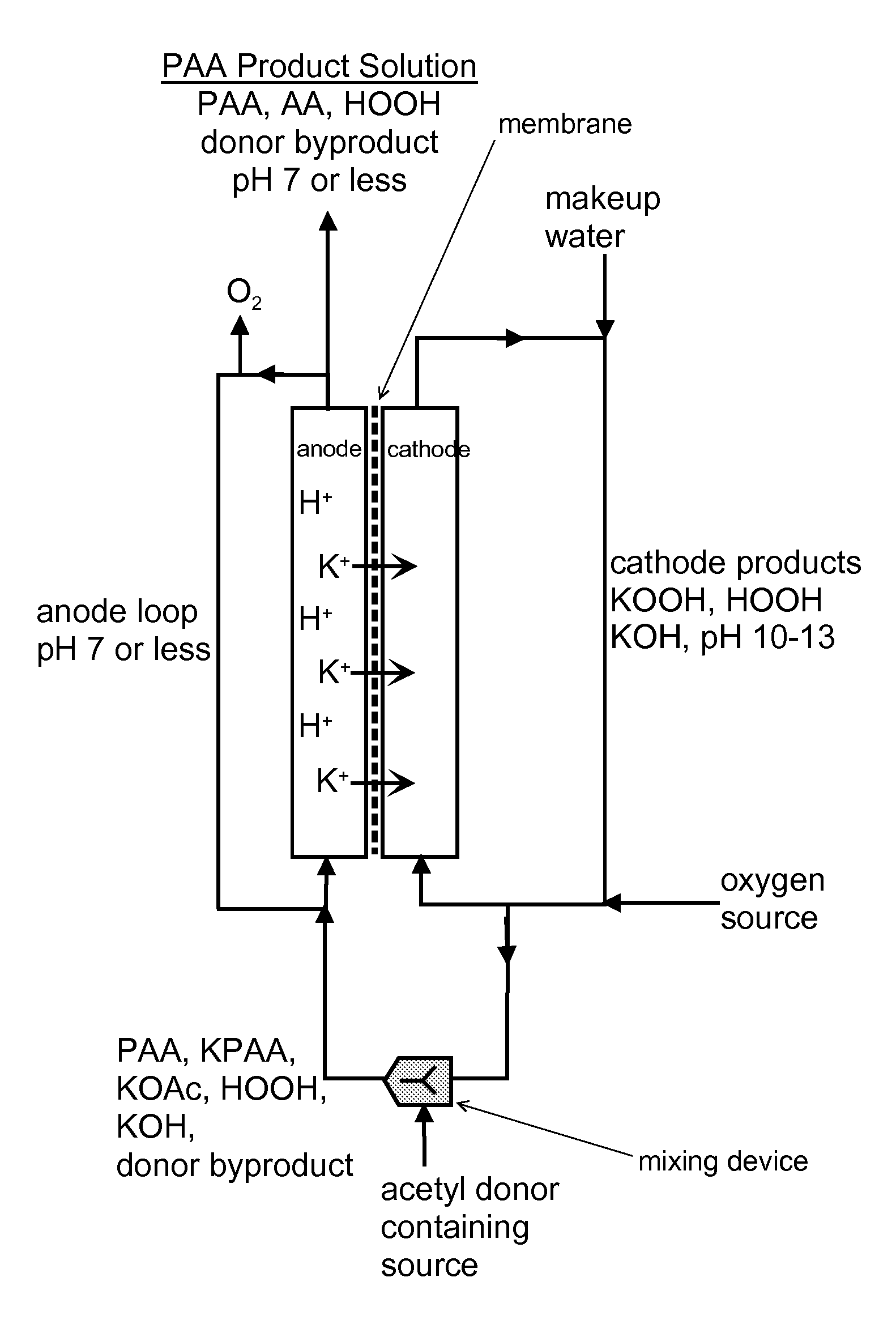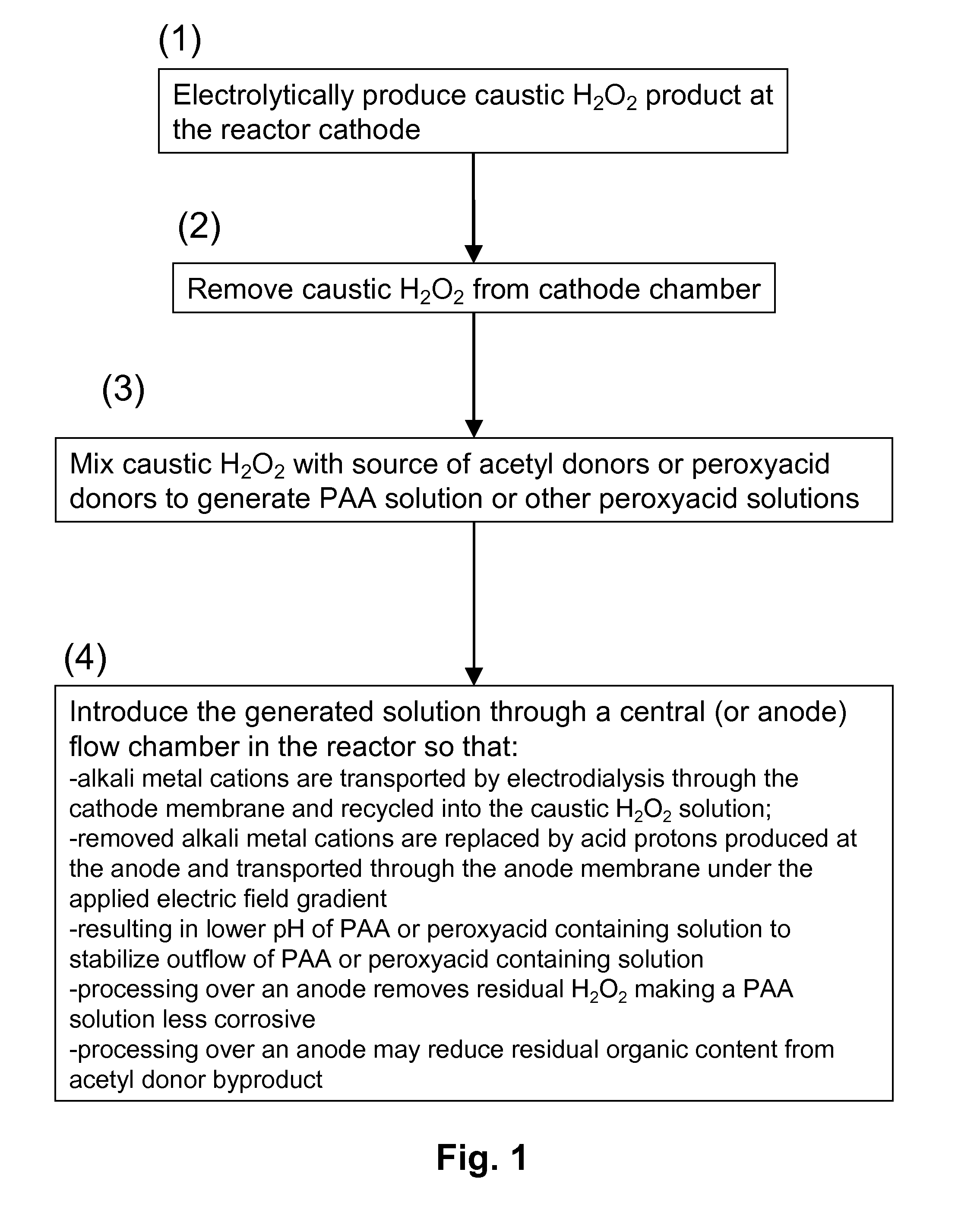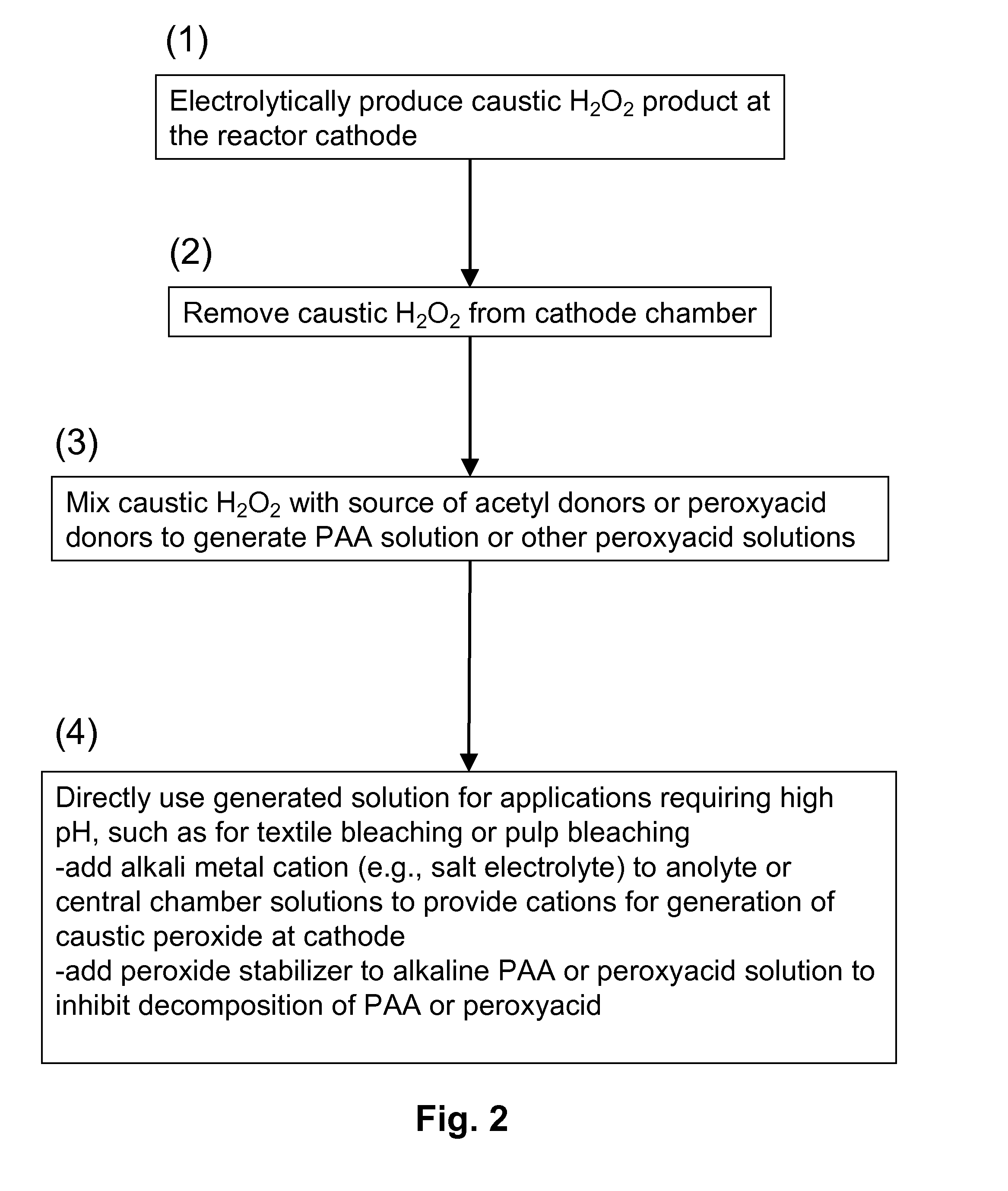Production of peroxycarboxylic acids
a technology of peroxycarboxylic acid and peroxycarboxylic acid, which is applied in the direction of electrolysis organic production, organic chemistry, electrolysis components, etc., can solve the problem that the solution of equilibrium paa 10 g/l is not cost-effective, and achieve the effect of lowering the concentration of hydrogen peroxid
- Summary
- Abstract
- Description
- Claims
- Application Information
AI Technical Summary
Benefits of technology
Problems solved by technology
Method used
Image
Examples
example 1
Non-Equilibrium PAA Production Using a Three-Chamber Reactor
[0089]FIG. 3 schematically illustrates a process of the invention for generating peracetic acid and other peroxyacids using an electrolytic reactor that generates hydrogen peroxide and caustic (base) from electricity, water, oxygen, electrolyte salts and acetyl donors or peroxyacid donors.
[0090]The electrolytic reactor in this example is composed of three flow chambers, one containing an anode (anode chamber), one containing a cathode (cathode chamber) and one disposed in between (central chamber) that does not contain an electrode. The three chambers are separated by cation exchange membranes where the one adjacent to the anode chamber is designated as the anode membrane and the one adjacent to the cathode is the cathode membrane. The anode and cathode electrodes are connected to a power supply (not shown). External to the electrolytic reactor is a mixing device where the caustic hydrogen peroxide solution produced at the ...
example 2
Batch Mode Operation
[0118]A cathode starting solution consisting of 1.42 g sodium sulfate in 2.0 L of deionized water is added to the catholyte reservoir. An anode solution consisting of 5.56 mL concentrated sulfuric acid in 1.0 L of deionized water is added to the anolyte reservoir. A central chamber solution consisting of 14.2 g sodium sulfate in 1.0 L of deionized water is added to the central chamber reservoir. All three solutions are circulated through their respective flow chambers, as summarized in FIG. 3.
[0119]The circulating catholyte solution is oxygenated while a current density of 300 A / m2 is applied to the electrodes for 3 hours using a digital DC power supply operated in current control mode. Hydrogen peroxide and caustic (NaOH) is produced in the catholyte solution giving a cathode product containing 2.04 g / L H2O2 at pH 11.4 at which time the reactor is turned off. The sodium ion concentration measured in the central chamber solution is depleted from the starting conc...
example 3
Two-Chamber, pH Shift of PAA Composition
[0128]FIG. 4 is a two-chamber configuration, wherein the caustic PAA composition is passed over the anode as anolyte solution to shift the pH from caustic to acid. Sodium and / or potassium cations are recovered back into the cathode process.
PUM
| Property | Measurement | Unit |
|---|---|---|
| molar ratio | aaaaa | aaaaa |
| molar ratio | aaaaa | aaaaa |
| molar ratio | aaaaa | aaaaa |
Abstract
Description
Claims
Application Information
 Login to View More
Login to View More - R&D
- Intellectual Property
- Life Sciences
- Materials
- Tech Scout
- Unparalleled Data Quality
- Higher Quality Content
- 60% Fewer Hallucinations
Browse by: Latest US Patents, China's latest patents, Technical Efficacy Thesaurus, Application Domain, Technology Topic, Popular Technical Reports.
© 2025 PatSnap. All rights reserved.Legal|Privacy policy|Modern Slavery Act Transparency Statement|Sitemap|About US| Contact US: help@patsnap.com



